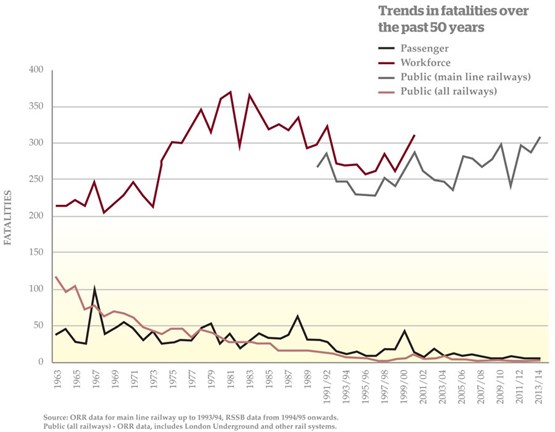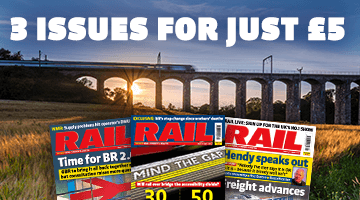“It is so important not to be complacent. Last year’s two freight train derailments could so easily have had very different outcomes. As a regulator I should never be satisfied. I want to see excellence, and I am not seeing excellence consistently across the main line railway.
“It is not about gold-plating the railway, it is about solid, continuous improvement.”
Network Rail has responded to the ORR’s report by stressing its efforts to improve safety.
“We know there is more to do to make the railway even safer for the public, passengers and particularly our workforce,” it says.
“We believe that everyone must return home safe, every day, which is why we have committed to eliminate all fatalities and major injuries among our workforce and the contractors who work for us by 2019. Outstanding safety performance and outstanding business performance go hand in hand.”
When asked whether Network Rail is tiring of being repeatedly mauled in public by the Regulator, Prosser sidesteps the question.
The Office of Rail Regulation’s safety directorate is smaller than it was six years ago. But it still employs 132 staff, which is just under half of the ORR’s total resources. Prosser says that, like Network Rail, it has had to achieve more with less - carrying out investigations faster and more effectively, while ensuring safety inspectors spend at least half their time out of the office, proactively examining the railway.
The ORR has approved more than £250 million of spending to increase protection and warning systems for track workers, plus £100m to close more level crossings. It says it wants to see rapid progress in introducing new technology to reduce risks.
It has established teams focused on Network Rail in the coming year, concentrating on the biggest areas of risk reduction: level crossings, track, civil structures, electrical and workforce safety.
So what will change between now and summer 2015?
“In next year’s report, I think we will still be talking about track workers,” sighs Prosser.
“It’s going to take time to change the culture. Perhaps five years. It is going to be a long grind.
“That is without doubt my biggest goal. And we will very much be talking about the challenges that come from growth, that come from the renaissance of the railways.”












